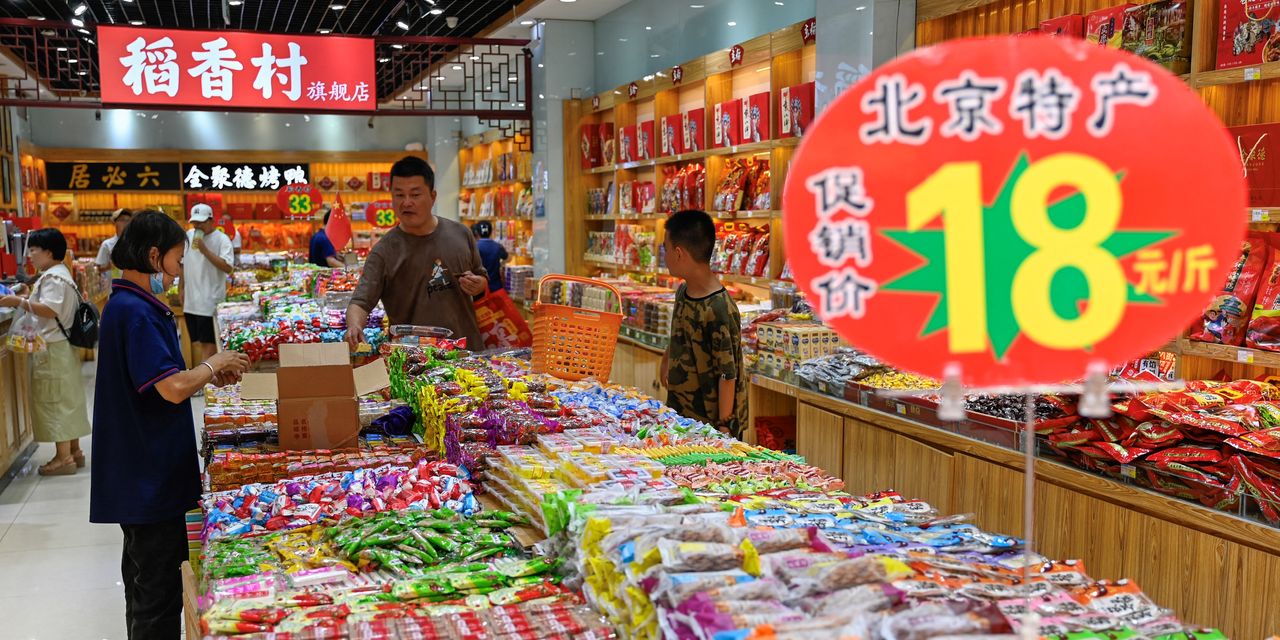The recent spate of dismal economic data out of China has raised the question of whether the world’s second-biggest economy will have a meltdown like the one in Japan in the 1990s.
Right now, China is in trouble. A property-market bust and a struggle to revive growth after Covid-19 era lockdowns were lifted has raised speculation that China could go the way of Japan—a meteoric rise followed by a long spell of stagnation.
It’s a view that is rapidly gaining popularity. Adam Posen, president of the Peterson Institute for International Economics, wrote in Foreign Affairs this month that China’s economic miracle is over. Nobel-winning economist and
New York Times
columnist Paul Krugman wrote in July that a sharp downturn in China now could be more destabilizing than Japan’s lost decade.
Room for Growth
China, though, is not Japan. Its population is much larger, and it hasn’t caught up as much to developed-world standards of living, which gives it lots of impetus to get growing again and the room to do it. If it can navigate through its enormous real estate slump and restore confidence to get consumers spending, it will recover. That will probably require more stimulus from the government and central bank, which is almost certainly on the way.
Comparisons between China and Japan have “made their way into the narrative, and it’s fueling concern about China,” said Nicholas Spiro, a partner at Lauressa Advisory in London. “They are unhelpful and quite misleading.”
There are some obvious similarities to Japan. Both are big Asian economies that experienced rapid growth over a long period, driven by trade with Western countries. Both started to stumble when property bubbles got too big, complicating the transition toward consumer-driven growth and away from exports. And both started to see a decline in working-age populations, which can slow growth.
No one wants to go down Japan’s path. The collapse of asset prices 30 years ago, combined with the demographics of an aging population, led to decades of slow growth, deflation, and relative economic decline on a global stage. It’s only now starting to escape the doldrums.
Red Flags
Recent data out of China raise red flags—exports have declined sharply and the country had an annual drop in consumer prices last month. Credit growth in July came in well below expectations. Inflation remains weak. The drumbeat of bad news continued as industrial production and retail sales both came in weaker than expected for July, which prompted the central bank to cut two key interest rates this week. At the same time, the statistics office said it would stop publishing data on youth unemployment, which had been rising for months—never a good sign.
“This is an extremely difficult moment for China,” said Spiro. “It’s dealing with a number of very acute challenges.”
They’re not intractable, nor do they mean China’s Japan-like fate is unavoidable. Nomura economist Richard Koo talks about Japan’s problems in the 1990s as a “balance-sheet recession.” That describes a downturn in which an economy becomes overindebted, leading companies and households to focus on paying down debt at the expense of consumption and investment.
Koo has said China may well experience a balance-sheet recession, but it may not last long. One lesson from Japan was to not let the real estate sector fall off a cliff—authorities are trying to slowly deflate the property bubble rather than letting it burst.
That’s a tricky needle to thread, but not impossible. The debt problems at
China Evergrande Group
two years ago and Country Garden this month have been dramatic. Country Garden had to suspend trading in some of its bonds on Aug. 13 as they hover at deeply distressed levels, casting a dark cloud over the entire financial system.
Tech Cold War
The Biden Administration’s restrictions on technology transactions with China aren’t helping either, with tit-for-tat bans on semiconductor sales and similar measures threatening to escalate into a tech cold war. On Aug. 9, President Joe Biden added new curbs on investing in Chinese companies developing chips or quantum computers that could potentially have military uses.
There is hope, though, that China won’t see the kind of extended downturn that troubled Japan for so long. Its economy is not as advanced as Japan’s had become when its bubble burst, giving it plenty of scope to drive fast growth over several more years. Its demographic issues aren’t nearly as severe. And it can draw from the lessons of Japan to avoid the worst.
China has a population of 1.4 billion, compared with about 120 million people in Japan. It only overtook Japan’s gross domestic product in 2010, and its GDP per capita is still only about a third of Japan’s. Without the property slump holding it back, annual economic growth of about 5% would be easily achievable, given the country’s overwhelming manpower.
For investors, the low expectations for China mean stocks are cheap, Spiro says. It might not take much good news to lift sentiment after the country’s rough year so far.
“The overriding priority right now is to ensure that property developers have the necessary means to finish unfinished projects,” said Spiro. “Confidence has been shot, but the last thing Beijing wants is to go back to a boom-and-bust cycle.”
China certainly has big hurdles to overcome to get back on track. But it’s not Japan, and probably won’t fall into the same trap.
Write to Brian Swint at [email protected]
Read the full article here





